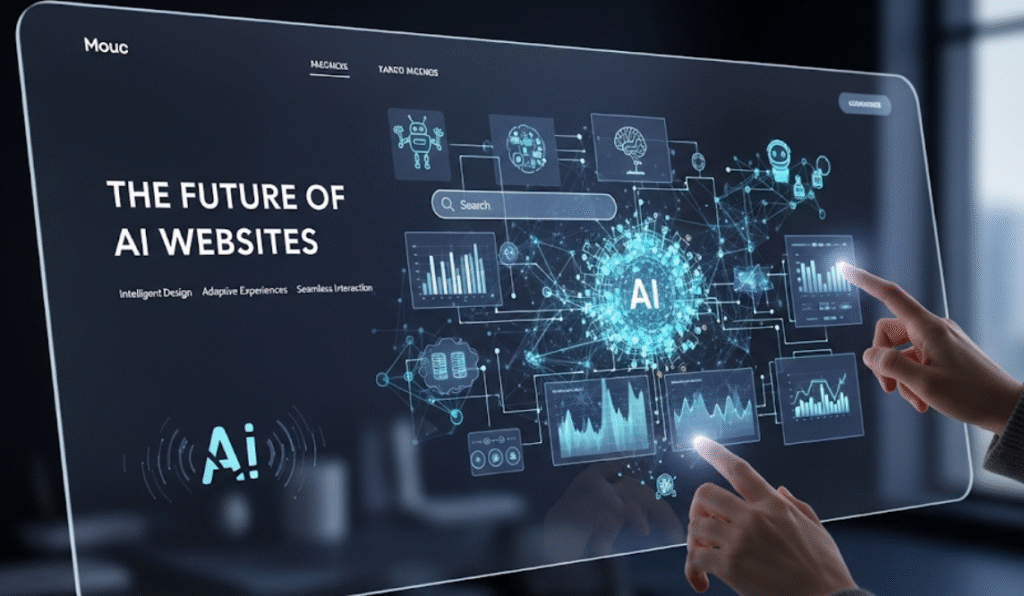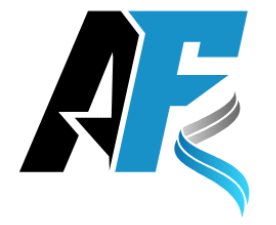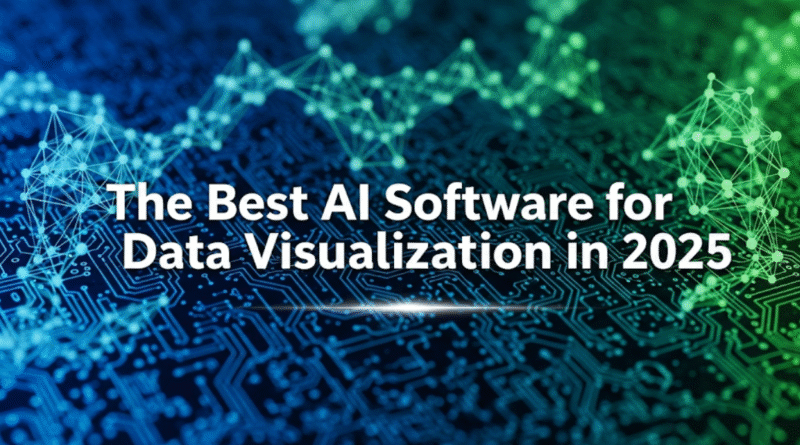The Best AI Software for Data Visualization in 2025
Data visualization has revolutionized the way organizations and people interpret intricate phenomena. By 2025, artificial intelligence has facilitated an even more profound shift in how easy it is to build beautiful charts and graphs and interactive dashboards without requiring the same level of data science proficiency.
Natural Language Generation — NLG: Used for automatically translating data into text, AI-powered Data Visualization tools in NLG convert complex raw numbers to meaningful human-like language. Whether you are a small business owner tracking sales or a marketing manager trying to understand customer behavior and even that student working on an academic research project, using the tool saves time and makes it easy following meticulous tasks of coding, analyzing on Excel Sheets etc. These intelligent platforms know which chart type is the most appropriate for your data, detect patterns in your information, and can even create reports that narrate interesting stories.
To help you make an informed decision regarding which tool suits you best — we have reviewed and listed the most prominent AI-powered software solutions for data visualization in 2025.
The Significance of AI-Powered Data Visualization Today
The amount of data in the world has grown very diverse over recent years. In only a couple of years, humans are estimating that more than 175 zettabytes of information is being produced each year. That would be like watching Netflix for 36 billion years in a row! The sheer amount of information which flows all around is nothing traditional data analysis methods could ever handle.
The issue is addressed with AI-powered visualization tools by:
- Automating complex processes — Stop spending hours manually adjusting formatting, or choosing colors
- Identifying hidden patterns — AI can see trends that a person might miss
- Suggesting optimal chart types — The software tells you how your specific data should be displayed
- Creating interactive experiences — Users will click through the dashboard and get real-time updated data
- Generating natural language insights — AI explains in simple English what your data means
How Smart Data Visualization Can Make a Difference for Your Business
Enterprises that have employed data visualization platforms enabled with AI, reportedly exhibit a drastic enhancement in the way they make decisions. Investing in data visualization for stronger data visualization capabilities:
- 67% more likely to quickly take business decisions
- 54% Better At Spotting Growth Opportunities
- 43% more accurate at identifying risks in advance of them hitting the fan
The Best AI Software Solutions for Data Visualization in 2025
Tableau with Einstein Analytics
Ideal for: Data Analysts and Fortune 500 Business
Tableau has long been a dominating force in the world of data visualization and the addition of AI on top of Einstein Analytics is merely icing that cake. It is a machine learning based platform which can automatically detect anomalies, time series trends and selects appropriate visualization type according to your data.
AI in the Platform:
- Recommendations for chart types and layouts
- Data preparation and Cleaning (Automated)
- Natural language Queries
- Predictive Analytics & Forecasting
- Automated Insight Generation
Pricing: From $75 per user per month
Pros:
- Extremely powerful and flexible
- Excellent for handling large datasets
- Strong community support and resources
- Hundreds of Data Source integration
Cons:
- Steep learning curve for beginners
- Higher price point
- Requires significant computing resources
AI Insights with Microsoft Power BI
Ideal for: Companies that are heavy users of the Microsoft Office suite
Power BI is getting a lot of traction because it integrates so well with all of the other Microsoft products and the price point is fantastic. In 2025, AI has improved to a large extent & is the most suitable for startups and enterprises.
AI Key Features:
- Automatic pattern detection with the Quick Insights feature
- Natural language queries via Q&A visual
- Smart Narratives offered by Power BI that succinctly explain data point origins and changes
- Automated machine learning capabilities
- Data profiling using AI force forecasting
Price: $10/month per user
Pros:
- Excellent value for money
- Smoothly connect with Excel and other complementary Microsoft tools
- User-friendly interface
- Strong mobile app support
Cons:
- Limited customization compared to Tableau
- Slow with huge datasets
- Certain advanced features of the webpage may not be available on lower-tier plans
Qlik Sense with Cognitive Engine
Good for: Self-service analytics for Businesses
One of biggest strength Qlik Sense has is its associative analytics engine that allows users to navigate and interact with data by following their own paths. Even more intuitive and powerful than the AI improvements in 2025.
AI Features:
- Associative Insights
- Smart Search Functionality
- Automated Chart Suggestions
- Augmented analytics: automated insights that facilitate understanding of data as quickly as possible, without deep analyst expertise
Pricing: As Low As $30 per user per month
Pros:
- Intuitive drag-and-drop interface
- Excellent data exploration capabilities
- Strong mobile experience
- Good collaboration features
Cons:
- Limited statistical functions
- Can be resource-intensive
- Community is not as big as Tableau or Power BI
Looker Studio, originally Data Studio (Google)
Ideal for: Small Business Owners and Digital Marketers
Considering the price tag, this free data visualization tool by Google has come a long way especially with AI upgrades which makes it ideal for those who need cloud-based basic/intermediate computational & visualization capabilities.
AI Capabilities:
- Smart fill for auto data completion
- Smart chart recommendations
- Auto connect with your dataset and data shape epitome
- AI-driven report performance optimization
- Natural language insights
Pricing: Free (with paid enterprise features)
Pros:
- Completely free for basic use
- Easy integration with Google products
- Simple, clean interface
- Perfect for web analytics and marketing data
Cons:
- Limited advanced features
- Slowness with large datasets
- Fewer customization options
- Requires Google account
Sisense with AI-Driven Analytics
Suitable for: Businesses with bulky data from varied sources
Sisense has become known for simplifying the complex nature of data processing and their AI capabilities in 2025 makes working with disparate data sources a breeze.
AI Capabilities:
- Automated data preparation and modeling
- Recommendations engine automatically generated based recommendations
- Smart delivers automated anomaly detection and alerting
- Natural language query interface
- Additional capabilities to determine behavior and predict future patterns
Pricing: Custom Pricing (typically starts at $2,000+ per month)
Pros:
- Great for complex data architectures
- Strong data preparation capabilities
- Good performance with large datasets
- Comprehensive AI features
Cons:
- High cost for small businesses
- Requires technical expertise for setup
- Limited free trial options
AI Tools To Keep An Eye On: The Latest In AI Visualization
Gamma
Great for: Content Creators & Presenters
Gamma is among a new wave of AI-driven presentation and data visualization tools that can automatically generate whole presentations from notes text.
You can expect:
- AI-powered slides and visualizations
- Automatic design and layout optimization
- Interactive data presentations
- Real-time collaboration
Observable with AI Integration
Best for: Engineers and scientists
Now supporting AI abilities that allow the user to generate custom visualizations using a natural language command (pretty amazing).
Features:
- SQL from natural language
- Auto-chart suggestions
- Interactive notebooks
- Community recipes
Choosing the Correct AI Visualization Tool
The right AI data visualization software is based on many factors.
Data Complexity and Volume
For Simple Data:
- Google Looker Studio
- Basic Power BI plans
- Canva’s data visualization features
For Complex Data:
- Tableau with Einstein Analytics
- Sisense
- Advanced Power BI/Qlik Sense
Budget Considerations
| Tool | Starting Price | Best For |
|---|---|---|
| Google Looker Community edition | Free | Small businesses with basic needs |
| Power BI | $10/month | Microsoft users, medium business |
| Qlik Sense | $30/month | Self-service analytics |
| Tableau | $75/month | Enterprise-level organizations, complex analysis |
| Sisense | More than $2,000 per month | Large enterprises using more complex data |
Technical Expertise Required
Beginner-Friendly:
- Google Looker Studio
- Power BI
- Canva data visualization
Intermediate:
- Qlik Sense
- Tableau (with training)
Advanced:
- Observable
- Custom Sisense implementations
Integration Requirements
Which other tools and data sources do you also need to connect?
CRM Systems: Salesforce, HubSpot
Marketing Platforms: Google Analytics, Facebook Ads
Databases: SQL Server, MySQL, PostgreSQL
Cloud Services: AWS, Azure, Google Cloud
File Formats: Excel, CSV, JSON

Best Practices for AI Data Visualization
Start with Clean Data
No state-of-the-art platform will magically turn bad data into gold. Before diving into visualization:
- Eliminate duplicates and mistakes
- Normalize formats and names
- Impute when possible
- A simple description of the sources of your information
Define Clear Objectives
Ask yourself:
- What are the questions I am trying to solve?
- Who is my audience?
- What should viewers do after seeing this information?
- How frequently will this visualization need updated?
Use AI to Help You Choose Your Charts
While most AI tools will simply suggest what visualization type to best use, here is a handy quick refresher:
- Line Charts — Trends over time
- Bar Charts — Comparing Categories
- Pie Charts — Parts of the whole (use sparingly)
- Scatter Plots — Relationships between variables
- Heat Maps — Patterns in big data
- Dashboards — Multiple metrics at a glance
Focus on Storytelling
A good visualization tells a story. Use AI features that:
- Generate narrative insights
- Highlight key trends and anomalies
- Suggest contextual information
- Achieve a logical flow within various charts
Where AI Fits In Data Visualization – Future Trends
Moving forward, a number of trends are expected to influence the direction AI-enabled data visualization will take in terms of its evolution:
Voice-Activated Analytics
I would expect more data exploration tools to offer this by late 2025. Instead of digging through menus, you’ll say things like “Let me see a trend on sales for the last quarter” or “Have you spotted anything abnormal with customer behavior?”
Automated Report Generation
From end to end, large swathes of how reports get made will be executed by AI instead. And these systems will come to get to know your preferences over time, and create those reports for you in a manner that is closer to the way you want it done.
Real-Time Collaborative Intelligence
What is to come are AI assistants capable in scenarios to attend in meetings, answer questions on the fly about data and suggest follow-up analyses according to the subject of discussion!
Enhanced Predictive Capabilities
Combining it with machine learning will make predictive analytics available such that users can forecast trends and model different scenarios with just a few command lines.
Common Challenges and Solutions
Challenge 1: Data privacy and security
Solution: Choose tools that offer:
- End-to-end encryption
- GDPR, CCPA & more compliance
- On-premises deployment options
- Granular access controls
Challenge 2: Integration Complexity
Solution:
- Some good starting tools that integrate with software you use daily
- Pick platforms with good API support
- Use implementation partners for more complex setups
Challenge 3: User Adoption
Solution:
- Provide comprehensive training
- Start with simple use cases
- Emphasize short-term benefits and quick wins
- Build templates and guidelines — best practices guides
Frequently Asked Questions
How is AI Data Visualization different from traditional tools?
AI Data Visualization tools leverage Machine-Learning to automatically suggest chart types, find patterns, cleanse data and provide insight. Instead, with the AI tools, your data is understood and insights are generated automatically without requiring extensive configuration or analysis from you.
Does AI visualization software require technical skills?
All new AI visualization tools => Non-technical user specific. Solutions like Power BI, Google Looker Studio and Qlik Sense all provide drag-and-drop interfaces and also enable people to use natural language queries. Nonetheless, there are many advanced features that will need you to have some technical knowledge.
How accurate are AI-generated insights?
AI insights are reliable for recognizing patterns and trends, but critical business decisions should be validated by human experts. Its accuracy level also varies based on data quality, complexity of analysis and type of AI algorithm used.
Are AI visualization tools adept at processing real-time data?
Enterprise AI Visualization platforms are designed to connect to live data sources and refresh visualizations in real-time. These might be sources such as real-time sensor data, live web analytics, financial markets, and operational systems.
Is an investment in AI data visualization going to pay off?
Most organizations achieve ROI in 6–12 months with faster decision-making, improved operational efficiency, more accurate customer insights and less manual analysis. The ROI you realize varies based on your current processes and how much you really utilize the tools.
Should You Use free AI Visualization Tools?
Though free tools like Google Looker Studio can provide excellent value to small businesses and for simple needs. However, they can have constraints in volume of data, advanced features and the level of customer support. Before making a final decision, consider your unique needs.
Making Your Decision
AI data visualization tools do not have to be confusing in 2025. Begin by explicitly stating the requirements, budget constraints, and technological specifications. In order to test its functionality with your own data, make use of free trials whenever available on most platforms.
But again, the best tool is still the one that your team will actually use consistently. Often, the best platform for your needs is not one that is packed with features and complexity but a straightforward, easy-to-use tool that you will actually use.
A dynamic environment in AI-based data visualization, new tools and concepts are being added on a consistent basis. Be sure to keep informed about updates on the platform you have chosen, and don’t shy away from re-evaluating your requirements as your organization expands or adapts.
Using AI tools able to create these unique and effective interpretations of raw data helps businesses analyze raw data faster and more accurately, giving them a competitive edge amid the consumer shift into a data-driven world.

